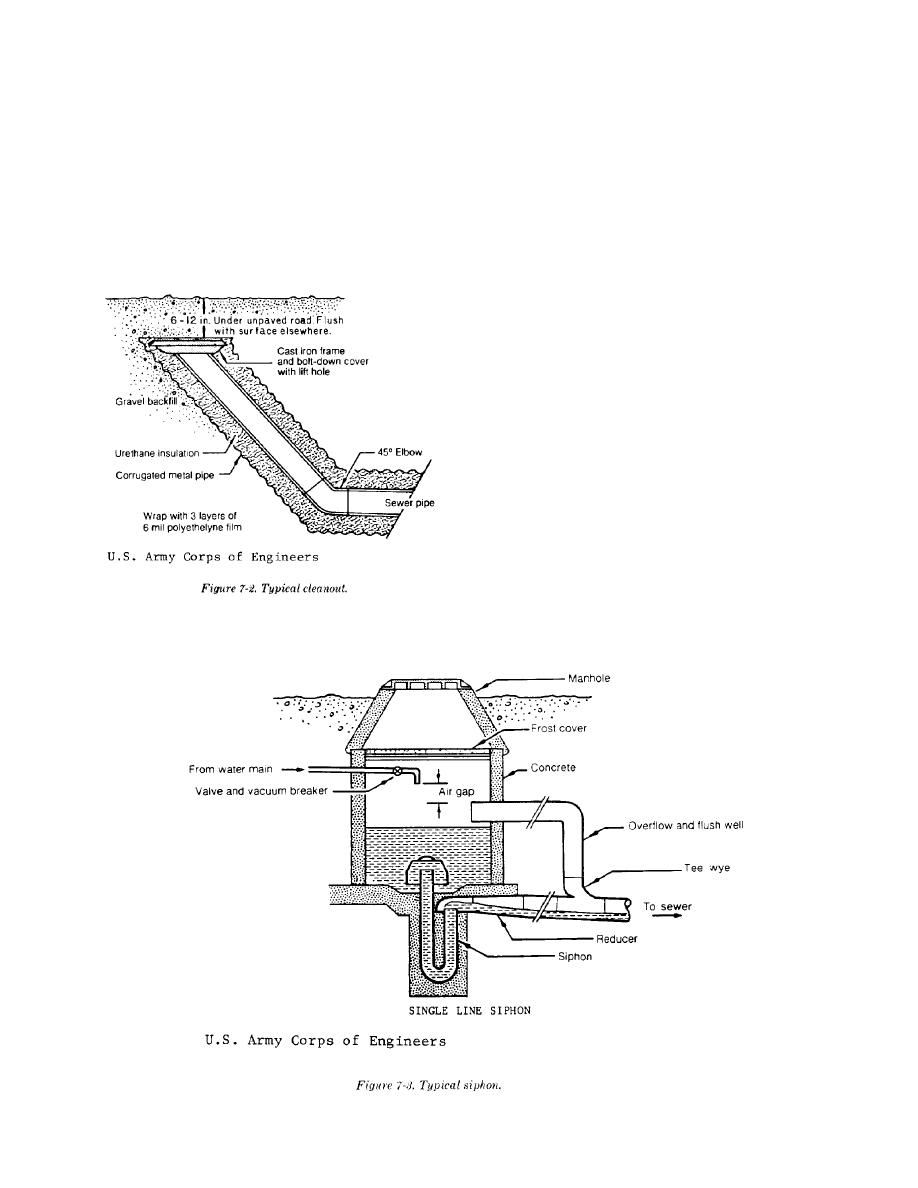
TM 5-852-5/AFR 88-19, Volume 5
b. Cleanouts. Cleanouts are typically used in
c. Siphons. Sewers subject to low flows and
building connections and in some cases are installed
velocities must be avoided if possible in the system
in place of manholes as described in TM 5-814-
design since a trickle flow may result in gradual
1/AFM 88-11, Vol.1. They must be used with cau-
freezing and ice build-up in the pipe. If such sewers
tion in cold regions since they are difficult to protect
are necessary, then a pump station or a flushing
and are susceptible to frost heaving. Figure 7-2
siphon must be included. These must be designed to
illustrates details of a cleanout that has been suc-
discharge a slug of relatively warm water into the
cessfully used in Canada.
system. If there is insufficient wastewater available
to operate the siphon frequently enough to avoid
freezing, it may be necessary to add water as shown
in figure 7-3, with proper precautions taken to pro-
hibit cross connections.
d. Building connections. Figures 7-4 and 7-5, for
buildings on pile or post foundations, show typical
connections for a gravity sewerage system in cold
regions The wall penetration shown in figure 7-4 is
more flexible than the floor penetration in figure 7-
5, and will permit more differential settlement
without damage to the sewer line.
7-4. Pump stations.
The basic hydraulic design of pumping stations will
be in accordance with TM 5-814-2/AFM 88-11,
Vol. 2. Special requirements and concerns for use in
cold regions are discussed below.
a. Insulation. The outside of the station structure
will be insulated with at least 3 inches of urethane or
polystyrene, with an outer covering to protect the
7-3



 Previous Page
Previous Page
